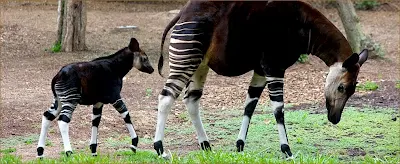Wildlife populations across the globe have dropped nearly 60 percent since 1970 and human activity is to blame, according to a report released by conservation groups.
The joint report produced by the World Wildlife Fund and the Zoological Society of London warned that if the current trends continue, the decline in world populations of mammals, birds, fish, amphibians and reptiles could reach two-thirds by 2020, an annual loss of about two percent.
"Wildlife is disappearing within our lifetimes at an unprecedented rate," said Marco Lambertini, director general of WWF International.
The report is based on an index of species compiled for long-term-monitoring by scientists. It consists of 3,700 species of animals from more than 14,000 different populations around the world.
According to the report, the drastic reduction in wildlife populations can be directly attributed to human development. A growing human population, which has more than doubled since 1960 to around 7.4 billion, means less room and food for other animals and could push them out of existence if changes aren’t made.
“We need to transition to an approach that decouples human and economic development from environmental degradation—perhaps the deepest cultural and behavioral shifts ever experienced by any civilization,” Lambertini said.
The environmental groups are looking to governments to help make that happen. Lambertini told the French news service AFP a recent sustainable development plan launched by the United Nations could help offset the threats to biodiversity.
"We have succeeded in making a strong business case for climate," Lambertini said. "Now we have to make an equally strong business case for conservation of natural systems."
[voanews.com]
27/10/16
The joint report produced by the World Wildlife Fund and the Zoological Society of London warned that if the current trends continue, the decline in world populations of mammals, birds, fish, amphibians and reptiles could reach two-thirds by 2020, an annual loss of about two percent.
"Wildlife is disappearing within our lifetimes at an unprecedented rate," said Marco Lambertini, director general of WWF International.
The report is based on an index of species compiled for long-term-monitoring by scientists. It consists of 3,700 species of animals from more than 14,000 different populations around the world.
According to the report, the drastic reduction in wildlife populations can be directly attributed to human development. A growing human population, which has more than doubled since 1960 to around 7.4 billion, means less room and food for other animals and could push them out of existence if changes aren’t made.
“We need to transition to an approach that decouples human and economic development from environmental degradation—perhaps the deepest cultural and behavioral shifts ever experienced by any civilization,” Lambertini said.
The environmental groups are looking to governments to help make that happen. Lambertini told the French news service AFP a recent sustainable development plan launched by the United Nations could help offset the threats to biodiversity.
"We have succeeded in making a strong business case for climate," Lambertini said. "Now we have to make an equally strong business case for conservation of natural systems."
[voanews.com]
27/10/16

No comments:
Post a Comment
Only News